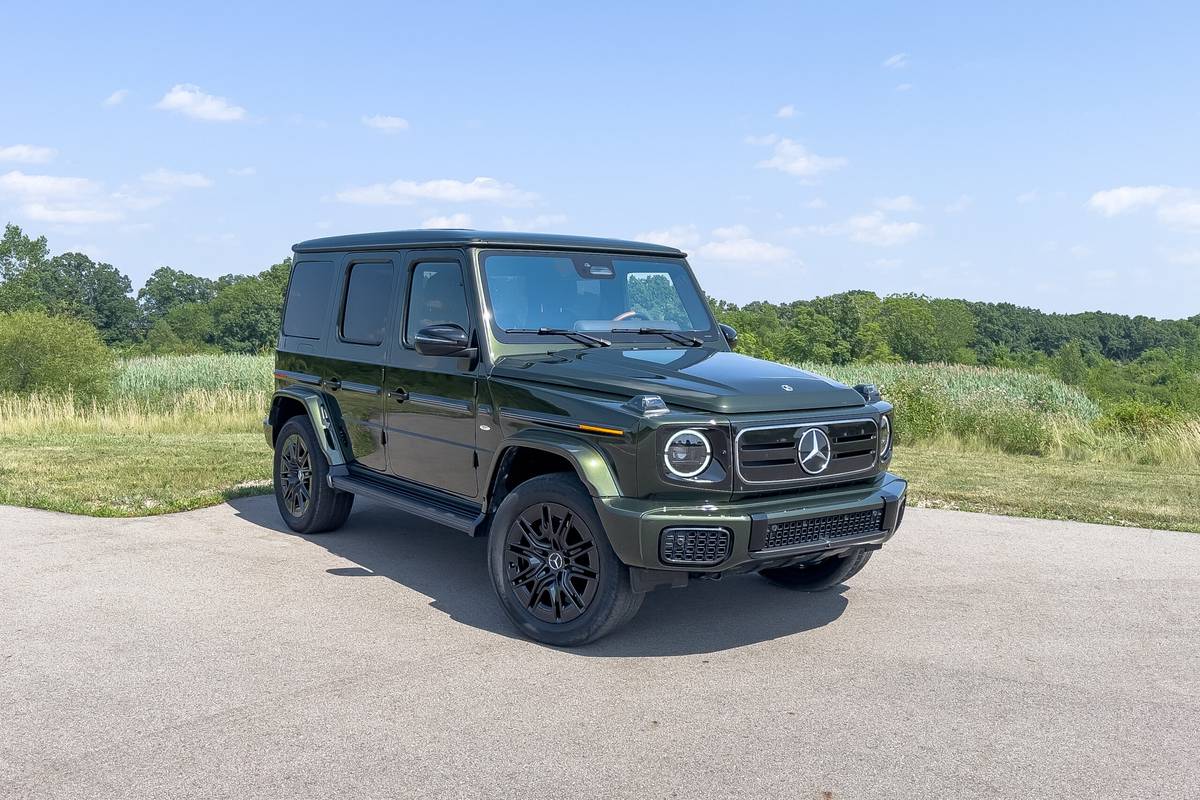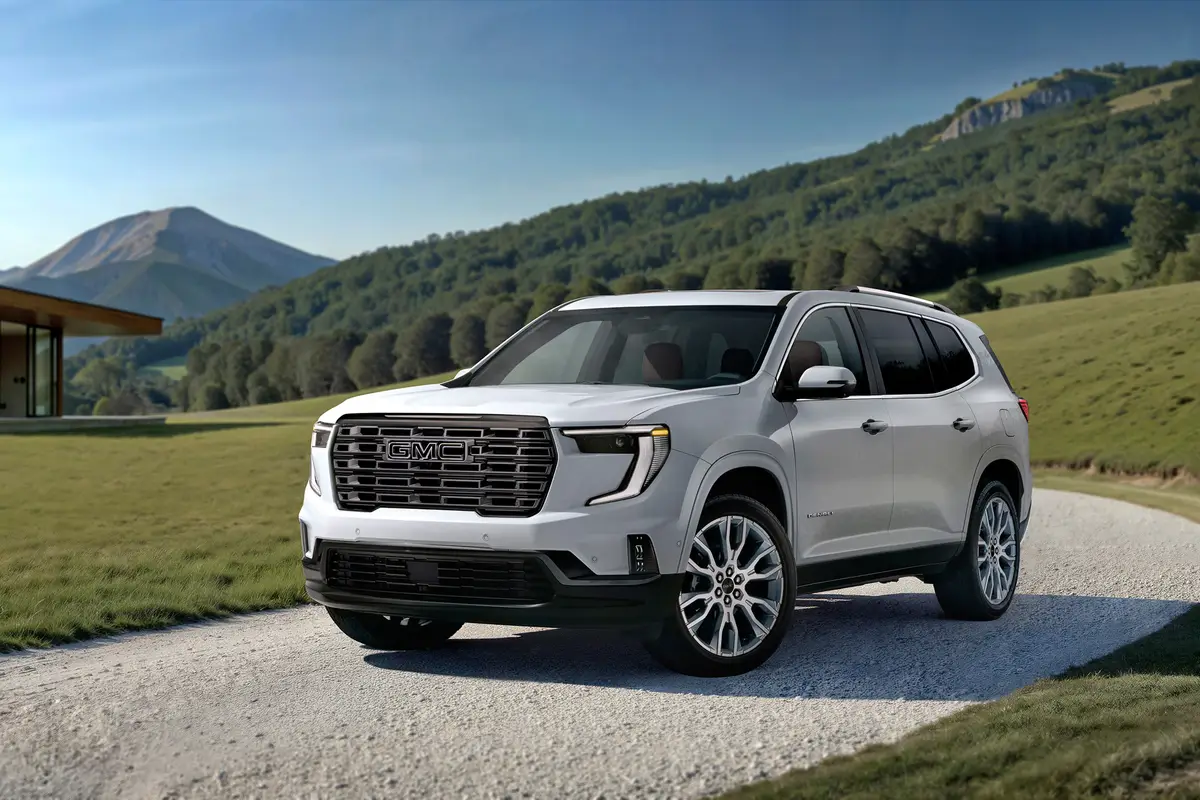Star-Telegram.com's view
And despite earlier suggestions from the Toyota folks that this would be a major challenger to the Jeep Wrangler, I really don’t think the folks at Jeep have anything to worry about.
While the Wrangler still is considered a major competitor, the FJ is aimed more at rugged, family-style compact SUVs.
Those vehicles include the Nissan Xterra, which is probably the FJ’s closest competitor, but also the Jeep Liberty (particularly the Rubicon model), the new Jeep Patriot, and even Toyota’s own Tacoma pickup, rigged for off-road use. The Tacoma has long been a favorite of off-roaders who prefer an import brand vehicle.
The FJ’s overall length is 177.6 inches, which is 12 inches longer than the RAV4 and 11 inches longer than the Element, about the same length as the Xterra, and two inches longer than the Liberty.
Our test vehicle was something of an oddity. It was the 2007 FJ Cruiser with two-wheel drive, which will never, ever appeal to anyone who would want to take the vehicle on serious off-road trails. And it’s really odd that Toyota would bring me a two- rather than four-wheel-drive model to test. The company says it expects 93 percent of FJ sales to be four-wheel drives.
Two-wheel-drive FJs are for those who want the look and feel of an off-road vehicle, but who aren’t particularly interested in taking their vehicles off the beaten path.
For me, a two-wheel-drive FJ is a waste of money, because it’s sort of like having an airplane that can’t actually fly. It looks great, and can drive around on paved or improved gravel roads quite well, but get it into the wilds, and it will get stuck in the first mud or sand bog.
That’s OK, though. Lots of people like to drive cool-looking cars, even ones that look as though they could blaze their own trails.
Here in Texas, most SUV buyers opt for two-wheel drive even if four-wheel-drive is available, because many Texas drivers have this idea that four-wheel drive is just for snow.
People who have no need for — or believe they have no need for — four-wheel drive often choose two-wheel drive to save money, and that’s probably going to be the case with the FJ.
Our two-wheel-drive tester had a base price of $21,710 (plus $580 freight) vs. $23,500 for the four-wheel drive.
That puts the FJ in the same price class as the Xterra, Liberty, Toyota RAV4, Honda CR-V, Honda Element, Hyundai Santa Fe, Suzuki Grand Vitara, Mitsubishi Outlander, Ford Escape, and Chevrolet Equinox, among others.
Most of those are normally offered or purchased with only two-wheel drive, and even of those that offer four-wheel drive, most do not have low-range gearing for serious trail driving, so aren’t favored by off-road-driving aficionados.
The good news for Toyota is that this is a popular class of vehicle and there is room for a standout model such as the FJ, which looks like nothing else in the class except for a slight resemblance to the Honda Element. Both have the same kind of rear-opening rear doors that require that the front doors be opened first — just like some of the extended-cab pickups.
Some consumers will find this to be a negative, however, particularly considering that Jeep is offering its first four-door Wrangler this fall, with all doors opening independently, and to the front.
The FJ’s rear doors open a full 90 degrees, though, which allows for relatively easy access to the back seat. And the back seat actually can hold up to three adults; the Element has only two captain’s chairs in the rear.
At the rear is a swing-out cargo door that opens to the left so it is more convenient for loading and unloading when parked parallel to the curb. The back glass can be opened separately, and without removing the exterior-mounted spare tire.
Where the FJ really stands out is with its rugged good looks.
Designed and brought to market in just two years after being displayed as a concept at the 2003 Detroit auto show, the new FJ hearkens back to the original Land Cruiser models that Toyota introduced in the U.S. market in 1958.
Toyota developed the original Land Cruiser in the early ’50s. It was patterned after the U.S. military jeeps used in World War II, and the early ones were almost identical to the U.S. models. Designers used the 1967 FJ Land Cruiser as their inspiration for the ’07 FJ.
While the FJ’s starting price is in the low-$20,000s, the sticker on our tester shows that it can be optioned up quite a bit higher.
The total sticker price on ours, including freight and options, was $28,123, and remember that we didn’t even have four-wheel drive. That would tack on an additional $1,790.
Options on ours included a convenience package ($1,840) that brought remote keyless entry, cruise control, rear parking assist, and daytime running lights; upgrade package No. 2 ($2,450), which tacked on a rear differential lock, multi-info dash display with compass and inclinometer, 17-inch alloy wheels, leather steering wheel, upgraded audio system with six-disc CD changer, and more; side-curtain air bags front and rear ($650); running boards ($345); and a towing package ($349), allowing the FJ to pull up to 5,000 pounds.
Rest assured, though, that you can get a quite livable FJ for the starting price. It’s not exactly stripped down.
Standard amenities include air conditioning, a choice of AM/FM/compact disc audio systems with optional subwoofer, tilt steering wheel, four cup holders, passenger seat back pockets and an upper dash-mounted map/glove box.
For safety, all FJ Cruisers come with antilock brakes with electronic brake-force distribution and brake assist, vehicle stability control, and traction control.
Under the hood of all FJs is the same 4.0-liter V-6 engine used in the larger Toyota 4Runner as well as the midsize Tacoma and full-size Tundra pickups. It’s rated at 239 horsepower and 278 foot-pounds of torque when using the recommended premium fuel. But Toyota says there is very little loss of power if regular-grade gasoline is used. EPA fuel-economy ratings are best for the two-wheel-drive model, of course — 19 miles per gallon in the city and 22 mpg on the highway. The two-wheel drive comes only with a five-speed automatic transmission, while the four-wheel drive can be outfitted with a six-speed manual or the five-speed automatic.
With the manual-transmission four-wheel-drive, the ratings are 16 city/19 highway, and surprisingly, the automatic transmission four-wheel-drive model beats that at 17 city/21 highway.
The four-wheel-drive systems are different in the manual and automatic models. With the manual-transmission version comes a fulltime four-wheel-drive system with a high-range normal-driving mode, a high-range low-gear mode for casual off-roading, and a low-range, low-gear mode for extreme off-road driving, such as rock-crawling.
This version, which is the most like a Wrangler as far as off-road capability is concerned, even has a cut-off switch on the dash for the clutch-starter safety interlock, which allows the vehicle to be started in first gear without having to depress the clutch. Also included in the package on the manual model is a Torsen limited-slip center differential that Toyota says will split power 40 percent to the front and 60 percent to the rear in normal driving, but can send up to 70 percent of the power to the rear wheels or 53 percent to the front.
Automatic-transmission models come with a part-time four-wheel-drive system adopted from the Tacoma pickup. It’s electronically operated from the dash and has shift-on-the-fly capability, along with a two-speed transfer case.
The two-wheel-drive model comes with an optional automatic limited-slip rear differential that is controlled by a switch on the dash. It can help get the vehicle moving if one of the two rear wheels is spinning but the other one still has traction.
The FJ has an independent front suspension, but the rear suspension includes a solid axle, which helps with traction in severe off-road conditions. Off-road purists demand that.
The windshield is nearly flat and has three wipers, great for keeping the mud cleared off.
G. Chambers Williams III is staff automotive columnist for the San Antonio Express-News and former transportation writer for the Star-Telegram. His automotive columns have appeared regularly in the Star-Telegram since 1995. Contact him at (210) 250-3236; chambers@star-telegram.com.
At a Glance: 2007 Toyota FJ Cruiser
The package: Compact, four-door, five-passenger, rear- or four-wheel-drive, V-6 powered sport-utility vehicle.
Highlights: This is the revival of a classic from Toyota’s past, the Jeep-like FJ that was introduced in 1958 and discontinued in the 1980s. It’s a rugged yet refined SUV with great off-road capability (in four-wheel-drive models). It’s well-designed, great-looking and of high quality.
Negatives: No entry-level model with four-cylinder engine and lower price for consumers on a budget.
Engine: 4.0-liter V-6.
Transmission: Six-speed manual (4-wheel-drive only); five-speed automatic (2WD or 4WD).
Power/torque: 239 HP/278 foot-pounds.
Overall length: 183.9 inches.
Curb weight: 4,050-4,295 pounds.
Towing capacity: 5,000 pounds (w/tow package)
Brakes, front/rear: Disc/disc, antilock.
Fuel capacity/type: 19 gallons/unleaded premium recommended, but regular is acceptable.
EPA fuel economy: 19 miles per gallon city/22 highway (2WD); 16/19 (4WD, manual); 17/21 (4WD, automatic).
Major competitors: Honda CR-V, Ford Escape/Mercury Mariner/Mazda Tribute, Mitsubishi Outlander, Saturn Vue, Subaru Forester, Pontiac Torrent/Chevrolet Equinox; Suzuki Grand Vitara, Nissan Xterra, Hyundai Tucson, Kia Sportage, Jeep Liberty, Jeep Patriot, Dodge Nitro.
Base price range: $21,710-$23,500, plus $580 freight.
Price as tested: $28,123 (2WD, with freight and options).
On the Road rating: ***** (five stars out of five).
All prices shown are manufacturer’s suggested retail; actual selling price may vary according to manufacturer and/or dealer rebates, discounts and incentives, if any.
Latest news

2025 Mercedes-Benz G580 With EQ Technology Review: Pricey and Portly, But Plenty Potent


